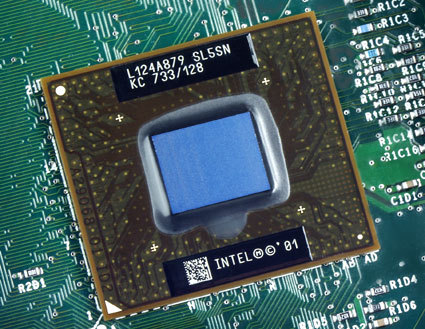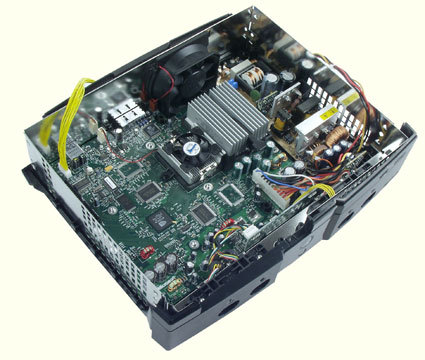Everything There Is To Know About the Xbox: Technology, Games, Accessories and What's At Stake
A Modest CPU, Apparently
In order to manage the data, Microsoft has opted for a 733 MHz Pentium III processor. Some will say that that is a bit light, considering that PC technology has reached a Pentium 4 with 2.2 GHz and that the life cycle of a console is between three to five years. But one should not look at this problem in these terms. In a PC, because of the open architecture of the system, and because it goes through an interface and millions of restraints, the power of the CPU is basic. With the console, everything depends on what it is supposed to do.
In this case, it is relieved of the main graphics work, which it assumes on the PC. If an Xbox game (which requires T&L or shaders) is well-programmed, then it practically doesn't even need the Pentium III. On a PC, it is not the case because of descending compatibility. On the Xbox, the CPU processes and sends the entered information - it is the connection between individual elements, such as the hard disk, and it manages the artificial intelligence. For this, one can say that the PIII is over-specified. As far as memory is concerned, the PS2 has a 250 MHz processor, even if the two are not comparable.
The other argument that is used against the Xbox concerns its 32 bit architecture, a step down from Nintendo's N64. But that is only marketing. If you are familiar with the PC, you know very well that switching to 64 bit doesn't change anything in and of itself because everything depends on the architecture. The method of handling and interpreting the registers, especially concerning the graphics performance that follows, would not add much to this type of architecture by switching to 64 bit. For now it is certainly not a limiting factor, but we'll see in a few years how limiting it is. Upon closer inspection, we can see that this is a Pentium III Coppermine 733 MHz processor with a mobile FC-BGA package soldered directly onto the motherboard. This reduces costs and saves on space.
The CPU only has a heat sink, cleverly air-cooled by the fan in the case. The cache has been reduced from 256 to 128 kB/sec, which shouldn't get overloaded. The wait times in dedicated programming on a dedicated platform have nothing to do with the PC, where the CPU spends its time fishing for information, in every sense of the word. To better understand this, it's enough to compare it with the Mac, which, because of its more closed architecture, also makes do with less cache.
Of course, there is a motherboard, which connects all the components. Its specifications are rigorous and do not vary among the various manufacturers, which include Intel, MSI, Asus and others.
Get Tom's Hardware's best news and in-depth reviews, straight to your inbox.


